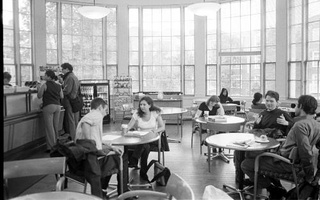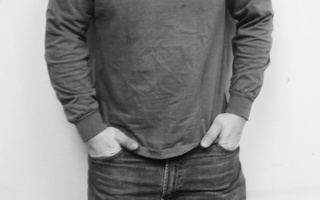VENICE, Italy — He’s been a glass-blower for the last ten years. Specializing in beads, he now teaches the skill to college students on Murano, the Venetian island renowned for the craft. I ask the man whether he lives here. He smirks and responds, half in jest, “No one lives on Murano.” Leaving him, I walk along the boardwalk-turned-sidewalk, watching as the never-ending line of shops begins to close. It’s a wonder that they all stay in business, as each is the same as the next, full of cheap glass trinkets: small clowns, a little perfume bottle (the majority of them are not actually Murano glass, but imported from places like China to be sold to unsuspecting sightseers). It was only early evening, but shopkeepers were already beginning to pull down grates in front of their windows. The tourists had departed and, suddenly, the street had become almost deserted.
“No Jews really live in the Ghetto,” the tour guide said as he directed a group of Americans around the five synagogues in Venice. “ Maybe 20 or 30 at most.” No one lives on Murano, no Jews live in the Ghetto. It is all part of the strangeness of Venice, where the aesthetic beauty is overwhelming until one realizes that the whole city seems to be set up for the amusement of outsiders. Hot and bothered middle-aged parents shuffle their young children along, filling their hands with glass bobbles and Carnival masks. They eat gelato and large margarita pizzas; they wait an hour in line to see the Doge’s palace and listen to one of the many tuxedoed string quartets in San Marco play Vivaldi (though they prefer it when the quartets strike up The Sound of Music). They say they have seen and done Venice and, in a sense, they would be correct.
Henry James wrote in The Italian Hours that of all the cities in the world, Venice is the easiest to visit without actually going there. Indeed, even if one has never set foot onto the sinking metropolis, it is hard not to have a pretty good idea of what it’s like: canals, gondolas, bridges, sleepy alleyways, crowded piazzas. The sights and images of Venice are everywhere in our own culture.
This attitude is reminiscent of Czech writer Milan Kundera’s character Sabina in The Unbearable Lightness of Being, whose lover wants her to visit Palermo. He asks how she can possibly live without seeing it, to which Sabina responds, “I have seen Palermo. A friend of mine once sent me a postcard from there. It's taped up over the toilet.”
And now, as I walk past stall after stall of glossy images, I feel that they accurately, collectively capture what the tourists see. As I check off all the sites I hit in Venice I wonder if in twenty years this “in person” aspect that we so desperately seek will make any difference. I don’t remember distinctive qualities about half the sites; my pictures are not nearly as good as the ones sold.
So perhaps James is right. But there is another way in which it’s easier to go to Venice without actually going there, and this is because of people like James himself—because Venice has become a source of interest for those who produce and consume literature. Writers have become obsessed with the city, not simply as a setting for their narratives or to detail its wonders, but because they can use the city as a metaphor for issues of humanity, the arts, the past. These authors have not allowed the cheery, glossed-over tourist vision to take hold, but have always seen a darker side of the city: a once powerful trade and cultural capital transformed into a sinking, aesthetic skeleton. For Balzac, it was the perfect frame for a Prince with only a title and no wealth; for Mann, it allowed for the exploration of beauty tainted by disease.
And so while we often aim to visit other places through literature, it seems that, in this case, words and phrases might actually give us a truer experience of the city—allow us to move past the superficiality of the average tourist experience without, as James said, ever visiting.
But maybe it is unrealistic to try and separate the tourists from the city, to try and say that the hustling and bustling, the sites, the souvenirs, are somehow a façade for a sadder and darker place. Perhaps along with gondolas and bridges, the city should be thought of as a place where, as you dine along the Grand Canal between the mainland and Giudecca, you should expect small cities to float by you: cruiseships so enormous that they form a shadow over the island as the passengers onboard wave down to you. Perhaps you should expect that in viewing the sites, you, too, become a part of the display. Over 130 years ago James was able to make the observation, “The everlasting shuffle of these irresponsible visitors in the Piazza is contemporary Venetian life. Everything else is only a reverberation of that..” His words demonstrate that the tension between being boxed in as a tourist and yet having nothing to escape to is not a recent phenomenon to Venice, but reflects what Venice is, and, in a sense, what it always has been.
Rachel A. Stark ’11, a Crimson news writer, is a social studies concentrator in Currier House.
Read more in Opinion
Topping Off TutoringRecommended Articles
-
POSTCARD: Mourning VeniceWhat will happen now that Venice is a city that lives by parodying itself? Can it survive as a viable, living city?
-
 Who's Using Harvardlunch.com?
Who's Using Harvardlunch.com? -
 Social Media Mambo
Social Media Mambo -
Under the Golden ArchesThus rationalized, I succumbed. In the homeland of pasta, pizza, and gelato, I was ordering burgers—and a side of fries with that.
-
I'm Still Standing ... in a CornfieldWhen I learned that Elton John would be playing in Padua, I wasted little time in buying a ticket.
-
Social DevelopmentMany people on campus are involved in advocacy for the developing world; these programs and projects should count social networking tools as key strategic assets.













